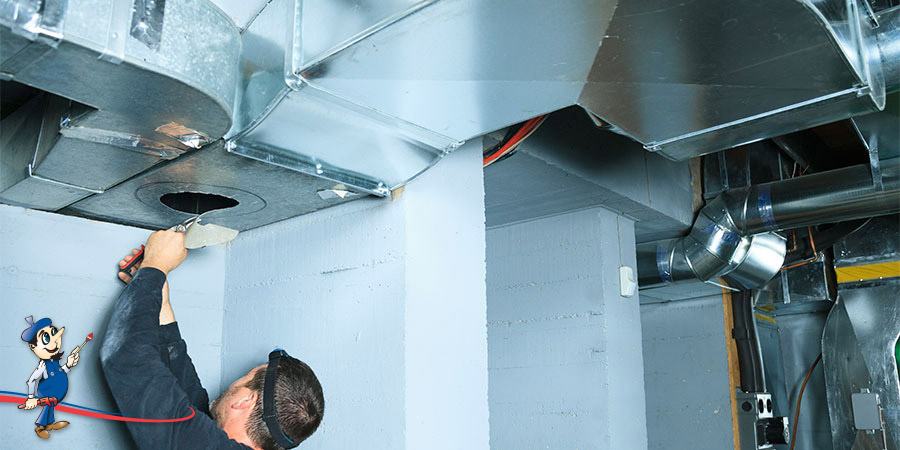Know Your Ducts

We’ve had a look at the different compressors and condensers used for central air conditioning, but what about the ducts? Simply put, a duct is the channel that carries cooled air from the air conditioning unit through your home, and can also remove warm or stale air. Ducts for central air conditioning can also be used for heating and filtering systems. Let’s look at some of the different types of ducts needed for air conditioning.
Flexible Ductwork
Flexible ducts are typically tube-shaped, made of a wire coil covered with a bendable, durable plastic, and surrounded by insulation. This kind of ducting is best in tricky spaces where rigid ducts are just not possible to install, or used to attach non-flexible ductwork to an air supply outlet. Like most central air conditioning parts, flexible ducts have specific installation requirements. For example, flexible ductwork needs to be secured and supported properly, ensuring little sagging or snaking. Kinks, bends, and turns also need to be minimized – these reduce air flow and could hamper the efficiency and effectiveness of the air conditioner. The advantages of flexible ducts are that they are fairly quick and easy to install, and often cost less than rigid ductwork. You can find out more about flexible ducts and their installation guidelines from the American Society of Home Inspectors.
Rigid Ductwork
They come in a variety of materials and sizes, and can be either cylindrical or rectangular. They are also often insulated. They are hardy, enduring, and reliable. The most common types of rigid ductwork are:
-
Sheet Metal Ducts
These are the kinds of ducts you’ve seen in films – usually with an action hero crawling through them! Galvanized steel and aluminum are the most common materials for sheet metal ducts. Aluminum in particular is relatively light and easy to install. They are also the least likely to harbor dangerous molds or growths because they have non-porous surfaces.
-
Fiberglass-Lined Ducts
These are sheet metal ducts (like those described above) that have internal or external fiberglass lining. This type of duct is common in office and commercial buildings, as it dampens the sound of the air conditioner unit. However, the fiberglass in these ducts can deteriorate and eventually release fiberglass particles into the air – this is a major health concern, especially with long-term exposure. Fiberglass-lined ducts are also difficult to clean for this same reason: the cleaning process can damage the lining and release fibers. These ducts can also become contaminated with molds and bacteria.
-
Fiberboard Ducts
Fiberboard is made from fiberglass strands that have been compressed and bonded with a resin, and then covered with a sheet of foil laminate to protect them from moisture. This type of duct is good for cooling and heating systems because it is well insulated by itself. However, it’s not recommended for ventilation because, like fiberglass-lined ducts, they can become a breeding ground for mold and mildew in humid climates. Also, because the surface is rough, they can also affect airflow and efficiency.
When installing an air conditioning system, consult with your contractor to find out which type of duct is best for your home or office. More often than not, sheet metal is the safest and most effective material for creating ductwork.





